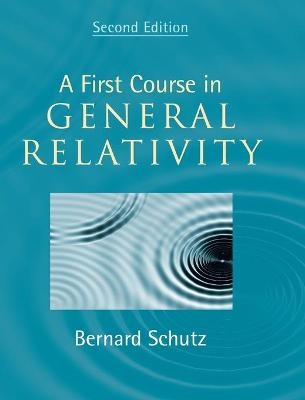
A First Course in General Relativity
Cambridge University Press (Verlag)
978-0-521-88705-2 (ISBN)
Clarity, readability and rigor combine in the second edition of this widely-used textbook to provide the first step into general relativity for undergraduate students with a minimal background in mathematics. Topics within relativity that fascinate astrophysical researchers and students alike are covered with Schutz's characteristic ease and authority - from black holes to gravitational lenses, from pulsars to the study of the Universe as a whole. This edition now contains discoveries by astronomers that require general relativity for their explanation; a revised chapter on relativistic stars, including new information on pulsars; an entirely rewritten chapter on cosmology; and an extended, comprehensive treatment of modern detectors and expected sources. Over 300 exercises, many new to this edition, give students the confidence to work with general relativity and the necessary mathematics, whilst the informal writing style makes the subject matter easily accessible. Selected solutions for instructors are available under Resources.
Bernard Schutz has done research and teaching in general relativity and especially its applications in astronomy since 1970. He is the author of more than 200 publications, including Geometrical Methods of Mathematical Physics and Gravity from the Ground Up (both published by Cambridge University Press). Schutz currently specialises in gravitational wave research, studying the theory of potential sources and designing new methods for analysing the data from current and planned detectors. He is a member of most of the current large-scale gravitational wave projects: GEO600 (of which he is a PI), the LIGO Scientific Collaboration, and LISA. Schutz is a Director of the Max Planck Institute for Gravitational Physics, also known as the Albert Einstein Institute (AEI), in Potsdam, Germany. He holds a part-time chair in Physics and Astronomy at Cardiff University, Wales, as well as honorary professorships at Potsdam and Hanover universities in Germany. Educated in the USA, he taught physics and astronomy for twenty years at Cardiff before moving to Germany in 1995 to the newly-founded AEI. In 1998 he founded the open-access online journal Living Reviews in Relativity. The Living Reviews family now includes six journals. In 2006 he was awarded the Amaldi Gold Medal of the Italian Society for Gravitation (SIGRAV), and in 2011 he received an honorary DSc from the University of Glasgow. He is a Fellow of the American Physical Society and the Institute of Physics, an Honorary Fellow of the Royal Astronomical Society, and a member of the Learned Society of Wales, the German Academy of Natural Sciences Leopoldina and the Royal Society of Arts and Sciences, Uppsala.
Preface; 1. Fundamental principles of special relativity; 2. Vector analysis in special relativity; 3. Tensor analysis in special relativity; 4. Perfect fluids in special relativity; 5. Preface to curvature; 6. Curved manifolds; 7. Physics in a curved spacetime; 8. The Einstein field equations; 9. Gravitational radiation; 10. Spherical solutions for stars; 11. Schwarzschild geometry and black holes; 12. Cosmology; References; Index.
| Erscheint lt. Verlag | 14.5.2009 |
|---|---|
| Zusatzinfo | Worked examples or Exercises; 1 Halftones, unspecified |
| Verlagsort | Cambridge |
| Sprache | englisch |
| Maße | 195 x 252 mm |
| Gewicht | 1010 g |
| Themenwelt | Naturwissenschaften ► Physik / Astronomie ► Astronomie / Astrophysik |
| Naturwissenschaften ► Physik / Astronomie ► Relativitätstheorie | |
| Naturwissenschaften ► Physik / Astronomie ► Theoretische Physik | |
| ISBN-10 | 0-521-88705-4 / 0521887054 |
| ISBN-13 | 978-0-521-88705-2 / 9780521887052 |
| Zustand | Neuware |
| Haben Sie eine Frage zum Produkt? |
aus dem Bereich


